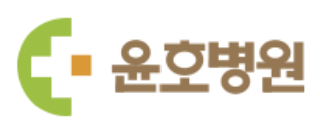Urinary Incontinence Treatment in Korea: Insights from Yoonho OB/GYN in Gangnam
Urinary Incontinence Treatment in Korea: Advanced Solutions for Better Bladder Control
What Is Urinary Incontinence?
Urinary incontinence (UI) is the involuntary leakage of urine, a common condition affecting women and men, particularly with aging or after childbirth. Types include stress UI (leakage during activities like coughing or sneezing), urge UI (sudden, uncontrollable urges), and mixed UI (both). In Korea, UI is a significant health concern, with studies showing a prevalence of 40.8–52.2% among women aged 30–79, particularly older adults. Korea’s advanced healthcare system offers cutting-edge treatments to improve bladder control and quality of life.
Why Choose Korea for UI Treatment?
South Korea is a global leader in medical tourism, known for its state-of-the-art technology, skilled urologists and gynecologists, and affordable care. Clinics in Seoul, especially in Gangnam and Sinsa, like SH Clinic and Seoul National University Hospital, provide specialized UI treatments with a focus on patient privacy and comfort. English-speaking staff and structured medical tourism packages make Korea accessible for international patients. The country’s proactive approach to women’s health, supported by the National Health Insurance (NHI), ensures high-quality, cost-effective care.
Treatment Options for Urinary Incontinence in Korea
Korea offers a range of non-surgical and surgical treatments tailored to UI type and severity:
- Non-Surgical Treatments:
- Pelvic Floor Exercises (Kegels): Guided by specialists, these strengthen pelvic muscles to improve bladder control. Clinics often combine Kegels with biofeedback for better results.
- Viveve Radiofrequency Treatment: A non-invasive procedure using radiofrequency heat to stimulate collagen production, tightening vaginal and pelvic tissues. It’s highly effective for stress and urge UI, with results lasting 1–2 years. SH Clinic reports 67% improvement one month post-treatment and 87% after six months. The procedure takes about 1.5 hours with no downtime. Costs range from ₩500,000 to ₩1,000,000 ($400–$750 USD).
- Botox Injections: Injected into the bladder muscle to reduce overactivity, particularly for urge UI. This outpatient procedure lasts 6–12 months and costs approximately ₩500,000–₩1,500,000 ($400–$1,100 USD).
- Sacral Neuromodulation: A device implanted to regulate bladder nerve signals, effective for severe urge UI. Performed in advanced centers like Asan Medical Center, it costs ₩2,000,000–₩5,000,000 ($1,500–$3,700 USD).
- Tibial Nerve Stimulation: Non-invasive electrical stimulation to calm bladder nerves, offered in clinics like Seoul Miz Hospital. Sessions cost ₩100,000–₩300,000 ($75–$220 USD) per visit.
- Medications: Anticholinergics or beta-3 agonists (e.g., mirabegron) are prescribed to manage overactive bladder symptoms. Costs are around ₩10,000–₩50,000 ($8–$40 USD) per month, often covered by NHI for residents.
- Surgical Treatments:
- Transobturator Tape (TOT) Procedure: A minimally invasive sling surgery to support the urethra, highly effective for stress UI. It takes 30–60 minutes with a recovery period of 2–4 weeks. Costs range from ₩2,000,000 to ₩4,000,000 ($1,500–$3,000 USD).
- Vaginoplasty or Pelvic Floor Reconstruction: Surgical tightening of vaginal and pelvic tissues, often combined with UI treatment for women post-childbirth. Costs are ₩2,000,000–₩5,000,000 ($1,500–$3,700 USD).
- Urethral Bulking Injections: Hyaluronic acid or collagen injections to support the urethra, a quick procedure for stress UI with minimal recovery time. Costs are ₩1,000,000–₩2,000,000 ($750–$1,500 USD).
The Treatment Experience in Korea
- Preparation: A thorough consultation with a urologist or gynecologist includes a medical history review, pelvic exam, and diagnostic tests (e.g., urodynamic studies, bladder ultrasound). Patients are advised to avoid certain medications or activities before procedures. For surgical treatments, fasting may be required.
- During the Procedure: Non-surgical treatments like Viveve, Botox, or tibial nerve stimulation are outpatient, with minimal discomfort. Surgical procedures like TOT or vaginoplasty are performed under local or general anesthesia in advanced operating rooms, using tools like the Da Vinci robotic system for precision.
- Post-Procedure: Non-surgical treatments have little to no downtime, with restrictions on intercourse or strenuous activity for a few days. Surgical procedures require 2–6 weeks of recovery, with follow-up visits to monitor healing. Complications like infection or discomfort are rare due to Korea’s high medical standards.
Accessing UI Treatment in Korea
- Clinics and Hospitals: Top facilities include SH Clinic (Sinsa), Asan Medical Center, Severance Hospital, and Seoul National University Hospital, all equipped with advanced tools like high-power lasers and urodynamic systems. These centers offer female urologists and English-speaking coordinators for international patients.
- Cost: Non-surgical treatments range from ₩100,000 to ₩1,500,000 ($75–$1,100 USD), while surgical options cost ₩2,000,000–₩5,000,000 ($1,500–$3,700 USD). NHI often covers part of the cost for residents, and medical tourism packages provide affordable options for foreigners.
- Cultural Sensitivity: Korean clinics emphasize privacy, with discreet environments and female specialists available. Same-day appointments and fast results (often within a week) enhance convenience.
Benefits and Impact
UI treatments in Korea improve bladder control, reduce social embarrassment, and enhance quality of life. Studies show UI is associated with depression, stress, and lower self-esteem in older Korean women, making effective treatment crucial. Non-surgical options like Viveve also address vaginal laxity and dryness, offering holistic benefits.
Patient Experience
Foreign patients praise Korea’s clinics for their professionalism, clean facilities, and empathetic care. Testimonials highlight SH Clinic and Gangnam-based centers for their multilingual support and quick, effective treatments. Patients appreciate the focus on confidentiality and the availability of comprehensive women’s health services, including cancer screenings and sexual health therapies.
Conclusion
Urinary incontinence treatment in Korea combines advanced technology, expert care, and affordability, making it a top choice for residents and medical tourists. From non-invasive options like Viveve and Botox to surgical solutions like TOT, Korea’s clinics offer personalized, effective treatments. If you’re experiencing UI, consult a trusted urologist or gynecologist at a reputable Korean clinic to regain control and confidence.
